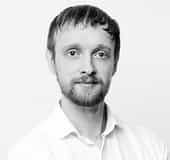The tools that organizations like yours use to analyze and interpret their social media data can significantly impact the strategic outcomes of social media orchestration and communication.
Today, you now have a broader spectrum of analytics tools to select from than ever before. The differences between them are often subtle or vague, and it can be hard to pin down which capabilities and features you need and which you do not.
So, let's talk about what organizations like yours can do to address your social media data collection, analysis, and reporting needs to make the most informed choice.
And, of course, Facelift offers two data and analytics solutions: Facelift Analytics and quintly. Each one is designed for a different type of user with different data requirements, and we'll look at the difference and discuss how you can decide which product fits your needs best.
Understanding your organization's data needs
Before you decide, conducting a thorough assessment of your organization's reporting needs is essential. This assessment will guide you in selecting a platform that aligns with your strategic goals and requirements.
Define strategic goals
Start with a clear understanding of what you aim to achieve through social media analytics. Are you looking to:
- Track engagement
- Measure ROI
- Understand audience behavior
- Perform benchmarking
- Do competitor analysis
- Manage large or multiple teams with diverse needs.
This is just a small handful of items you may be looking to address with your social media tool, and your objectives will influence the depth and breadth of analytics needed.
Assess data volume and complexity
Consider the volume of data you're working with and how intricate your analysis needs to be.
Do you need to analyze data across a large number of multiple social media platforms? Perhaps your large number of users requires unique and customizable user roles. The complexity and volume of your data and the teams that need to work with it will help steer you toward the right tool.
Evaluate integration needs
We are all working with large tech stacks these days, and they are only increasing in number, cost, and complexity.
Your choice of analytics tool might depend on how well the analytics platform integrates with other tools in your marketing tech stack. Seamless integration can simplify workflows and enhance data accuracy.
To determine this, look at all the marketing or other analytics technology your teams are working with and get granular about what you use and can live without. Many more advanced data platforms will have significant API availability and a vast number of integrations.
Consider reporting frequency, flexibility, and stakeholders.
How often does your team need to report on social media data, and to whom are they reporting?
Frequent, detailed reports with customizable elements might lean your preference toward a more advanced tool. However, a more basic analytics system may be all you need if you're working with a smaller marketing team or just looking to track a couple of primary KPIs.
Actionable steps for assessing your data needs
- Conduct a stakeholder meeting: Bring together social media stakeholders from various departments to discuss and align on social media objectives and reporting needs. This cross-functional approach ensures that the selected analytics tool meets the broad needs of the organization.
- Audit your current analytics tools: Like before, review the capabilities and limitations of your current analytics solutions. Suppose you only maintain a single page for your organization. In that case, this can be as simple as the native analytics tools attached to your social media business pages, such as those integrated into Facebook, LinkedIn, and all other major platforms.
Identify gaps between what you're currently getting from these platforms and what you'd like to achieve instead. This will help you recognize the added features you need from an analytics platform.
- List essential features and integrations: Based on your objectives and the gaps identified, list the essential features and integrations required based on the other tools you're using. This list will serve as a guide when comparing social media analytics tools. When you speak to a company representative providing the tool, bring your list and ask about their integrations!
There's nothing worse than investing in an expensive piece of software to discover later that it doesn't synchronize with another piece of expensive software.
- Evaluate budget constraints: Align your analytics tool choice with your budgetary constraints. While highly advanced tools can offer additional capabilities, these tools are generally geared toward larger enterprises with a need for comprehensive data analysis.
Facelift Analytics vs. quintly: which is better for you?
No matter your reporting and social media data collection needs, you can find your solution with Facelift.
We offer two separate products that are geared towards two very different users. Facelift Analytics is our basic on-board analytics and reporting module. It integrates seamlessly with the Facelift workspace and provides most KPIs and basic reporting features many companies require.
Since it is part of the Facelift workspace, users also receive all of the additional social media orchestration benefits provided, such as Publisher and our Unified Inbox for community management.
If your organization requires more power, our data powerhouse quintly is the best option for you. quintly was built for advanced social media data collection and provides vastly more features as a standalone product.
Here are the basics at a glance:
Facelift Analytics:
- Designed for small to medium-sized businesses with more straightforward social media reporting needs.
- It offers basic yet robust analytics capabilities and is ideal for tracking engagement, audience growth, and content performance.
- User-friendly interface makes it easy to navigate for daily monitoring and reporting.
quintly:
- Serves organizations with complex, large-scale data analysis and reporting needs.
- Offers advanced analytics features, including multi-platform analysis, competitor benchmarking, and customizable dashboards and reports.
- Extensive integration capabilities ensure that quintly works seamlessly with a wide array of digital marketing tools, enhancing the depth of insights gathered.
- Grants access to the quintly Data Layer.
Conclusion
Your decision to invest in the best social media data tool is based on a detailed understanding of your organization's specific reporting needs and strategic objectives.
Organizations can leverage the right tools to harness the power of social media analytics, driving informed decisions and achieving measurable outcomes.
And, of course, whether your focus is on basic analytics for day-to-day management or has more complex needs for strategic data insights or reporting, Facelift offers a tailored solution to meet your requirements.
Schedule your personalized demo today.
Unlock the full potential of your social media data. Go here to schedule a personalized demo with our product experts. Experience firsthand how Facelift Analytics or quintly can transform your social media strategy and help you achieve your goals.
Let's harness the power of social media data together. Your journey to smarter analytics starts now!

-1.jpg)





